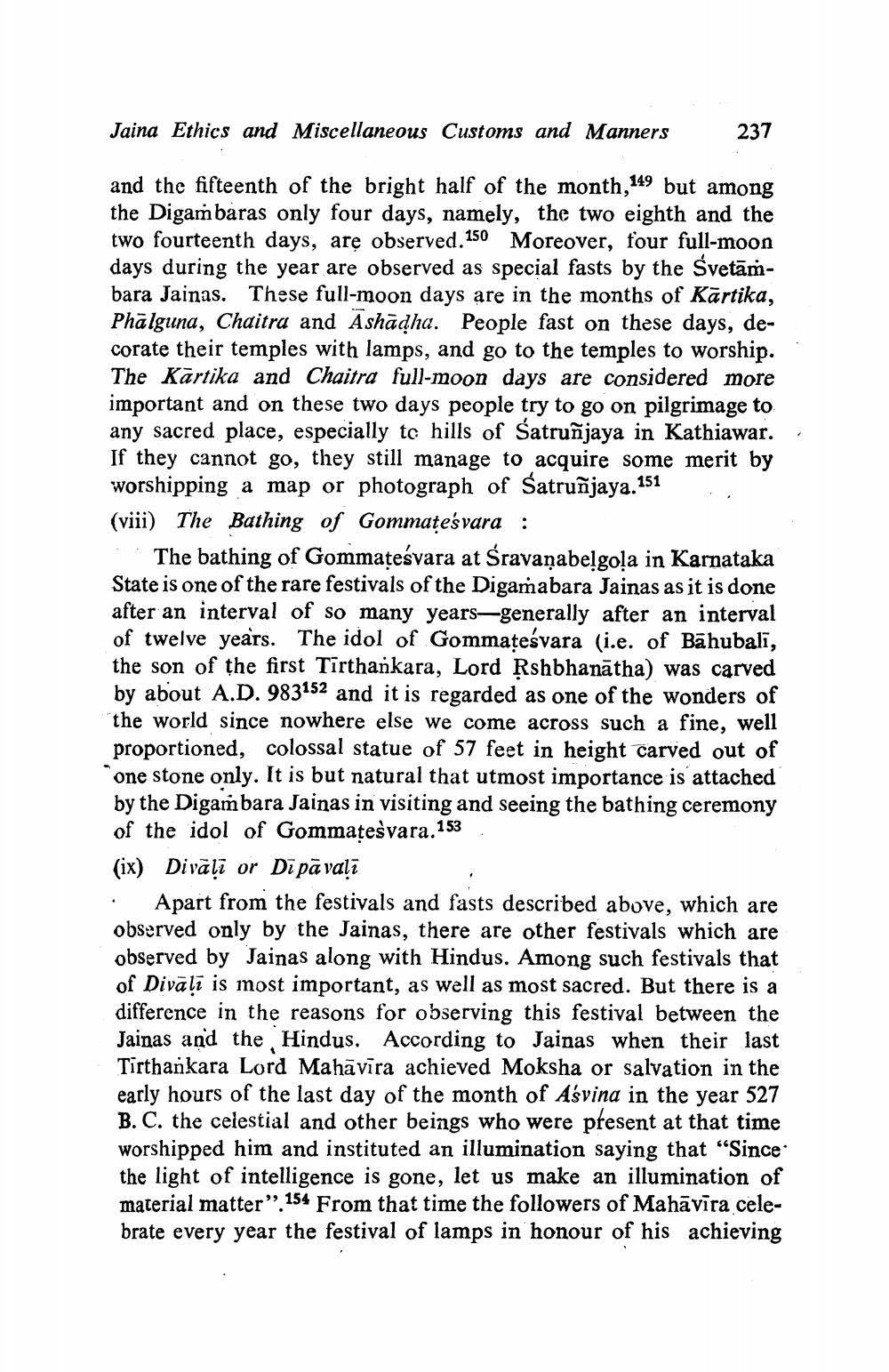________________
Jaina Ethics and Miscellaneous Customs and Manners
237
and the fifteenth of the bright half of the month,149 but among the Digambaras only four days, namely, the two eighth and the two fourteenth days, are observed.150 Moreover, four full-moon days during the year are observed as special fasts by the Svetāmbara Jainas. These full-moon days are in the months of Kārtika, Phālguna, Chaitra and Ashādha. People fast on these days, decorate their temples with lamps, and go to the temples to worship. The Kārtika and Chaitra full-moon days are considered more important and on these two days people try to go on pilgrimage to any sacred place, especially te hills of Satruñjaya in Kathiawar. If they cannot go, they still manage to acquire some merit by worshipping a map or photograph of Satruñjaya.151 (viii) The Bathing of Gommateśvara:
The bathing of Gommateśvara at Śravanabelgola in Karnataka State is one of the rare festivals of the Digamabara Jainas as it is done after an interval of so many years—generally after an interval of twelve years. The idol of Gommațeśvara (i.e. of Bahubali, the son of the first Tirthankara, Lord Rshbhanātha) was carved by about A.D. 983152 and it is regarded as one of the wonders of the world since nowhere else we come across such a fine, well proportioned, colossal statue of 57 feet in height carved out of one stone only. It is but natural that utmost importance is attached by the Digambara Jainas in visiting and seeing the bathing ceremony of the idol of Gommatesvara.153. (ix) Divāļī or Dipā valī · Apart from the festivals and fasts described above, which are observed only by the Jainas, there are other festivals which are observed by Jainas along with Hindus. Among such festivals that of Divāli is most important, as well as most sacred. But there is a difference in the reasons for observing this festival between the Jainas and the Hindus. According to Jainas when their last Tirthankara Lord Mahāvīra achieved Moksha or salvation in the early hours of the last day of the month of Aśvina in the year 527 B.C. the celestial and other beings who were present at that time worshipped him and instituted an illumination saying that “Since the light of intelligence is gone, let us make an illumination of material matter”. 154 From that time the followers of Mahāvīra celebrate every year the festival of lamps in honour of his achieving




